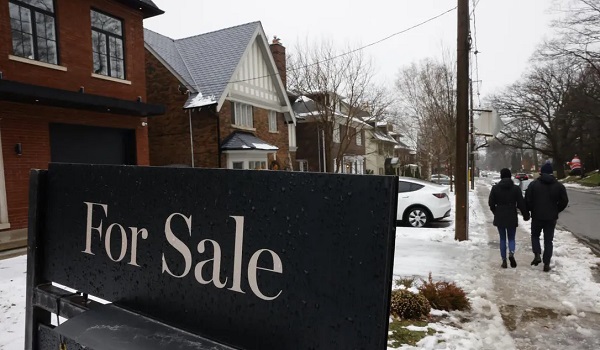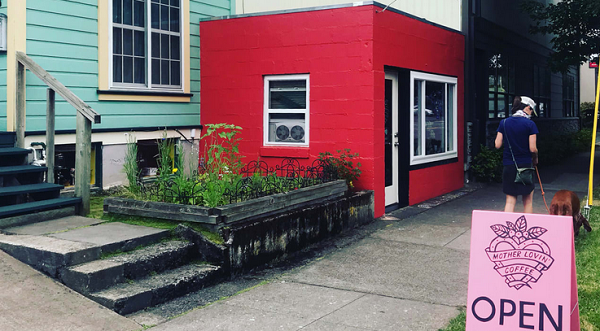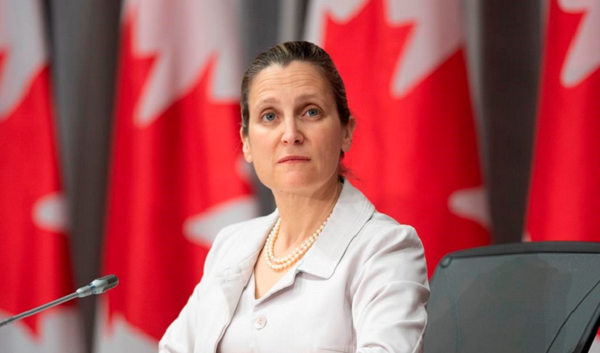OSFI directs mortgage insurers to set aside more money for defaults as negative amortizations pile up
Canada’s financial regulator’s decision to demand mortgage insurers set aside more capital as negative amortizations pile up is a prudent measure in the face of high interest rates and economic uncertainty, one analyst says.
Last month, the Office of the Superintendent of Financial Institutions (OSFI) required mortgage insurance companies to set aside more capital for negative amortizations — when a homeowner is only paying money toward interest instead of the principal each month, resulting in a growing balance sheet — as a way to buffer against riskier mortgages as more homeowners will struggle with mortgage payments.
This mortgage product allows for homeowners to have a variable-rate mortgage where the monthly payments remain fixed, but as interest rates rise more of their payment goes toward interest instead of principal. It’s resulted in some homeowners getting “infinity mortgages” as their amortization automatically increases each month.
Negative amortization mortgages have become more prevalent, increasing the mortgage default risk as variable-rate fixed payment mortgages became highly popular during the pandemic, said Nadja Dreff, senior vice-president and head of Canadian Insurance at DBRS Morningstar — a global credit rating agency.
Despite the risk of increased mortgage defaults, the current housing downturn will be manageable for mortgage insurers if the labour market remains resilient, said Dreff, who released a report on the change last week.
All three mortgage default insurance companies in Canada — government-backed Canada Mortgage and Housing Corp. (CMHC), and privately owned Canada Guaranty Mortgage Insurance Company (CG) and Sagen Mortgage Insurance Company Canada (Sagen) — are in a secure financial position to handle riskier mortgages, she said.
“We ‘stress test’ the insurance companies to see how they will fare based on higher unemployment rates or mortgage default rates, and under those stressed conditions we then evaluate how much capital we’d like to see,” Dreff said in an interview. “Based on how much capital mortgage insurance (companies) already have to set aside, the additional amount is immaterial.”
The proportion of variable-rate fixed payment mortgages on the mortgage insurers’ books varies based on the proportion of business coming from lenders that offer this type of product, Dreff said.
“If there is a default on an insured mortgage, mortgage insurers’ will compensate the lending institution for the losses that cannot be recovered through the sale of the mortgaged property, including any unpaid interest,” she said in her report.
Some negative amortization mortgages can turn into negative equity mortgages when the loan-to-value (LTV) ratio, which measures the amount of a loan against the value of the mortgage holder’s home, is greater than 100 per cent. To protect against these types of mortgages, OSFI adjusted the maximum loan-to-value ratio from 100 to 105 per cent.
“This clarifies that in certain instances where the loan-to-value exceeds 100 per cent, capital requirements increase. The previous version of the guideline did not address this scenario,” an OSFI spokesperson said in an email. “Overall, this proposed incremental change is intended to align capital requirements with increased risks, where present, and will add necessary resilience to Canada’s mortgage finance system.”
Homes with less than 20 per cent paid as a down payment require mortgage loan insurance, which protects lenders, and have higher loan-to-value ratios.
If the ratio is pushed to 95 per cent, there’s still equity in the home, but once it’s 100 per cent or higher that means the mortgage is “underwater” — when the homeowner owes more to the lender than the home is worth.
“Data on negative equity mortgages are not publicly available, but such mortgages exist and will lead to higher capital requirements,” Dreff said. “To the best of our knowledge, none of the lenders permit mortgages with effective LTVs higher than 105 per cent. Given the relatively low prevalence of negative equity mortgages, the overall impact for mortgage insurers is expected to be minimal.”
OSFI’s changes are “practical” given the rise of negative amortization mortgages, Dreff said, and while an uptick in mortgage defaults is expected as more mortgages continue to renew at higher rates, mortgage insurers have enough capital to remain “safe.”
This article was reported by The Star
















